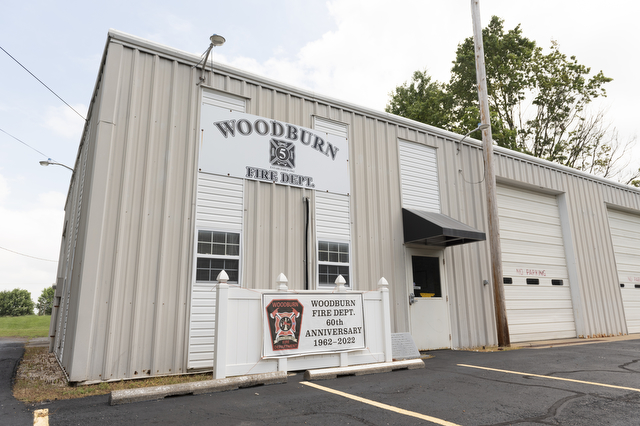GOP governor’s race urban vs. rural
Published 11:00 am Monday, July 28, 2014
Businessman Hal Heiner, a declared Republican candidate for governor next year, and Agriculture Commissioner James Comer, a probable one, recently took questions together.
Louisville TV station WDRB’s Chris Otts reported, “Whether on taxes, education or casino gambling, there was little daylight between likely Republican rivals for governor, Hal Heiner and James Comer.”
Others concurred.
Since Heiner and Comer are apparently so similar on the issues, it is unlikely that any policy position will determine the 2015 GOP primary winner. So what will?
Heiner has already injected $4 million of his personal wealth into his campaign. He will probably outspend Comer by a lot. Comer enjoys much better name recognition and has a broad base of grassroots and local organization support. Each will get some good endorsements, for what those are worth.
Many Republicans will base their vote on which man stands the best chance of beating Jack Conway, the likely Democratic nominee. Some may even consider which candidate would make the best governor.
Another way of looking at the race is as a “state seal” election. Kentucky’s official emblem depicts two men shaking hands. One wears the formal attire of a gentleman of the city, whereas the other is in the buckskin of a pioneer or rural rustic.
Heiner hails from Louisville metro, the state’s largest city with a population of 756,832 (including the incorporated cities within its boundaries). Comer comes from tiny Tompkinsville, the county seat of Monroe County in southcentral Kentucky, which boasted only 2,402 souls in the last census.
Heiner’s choice of a running mate, KC Crosbie of Lexington, the state’s second largest city with a population of 308,408, reinforces this urban vs. rural analytical framework. It will be very interesting to see where Comer’s selection comes from.
•There are 1,196,183 registered Republicans in Kentucky – 176,884, or almost 15 percent of them, are in Heiner’s home county of Jefferson.
•85,493 more Republicans, or an additional 7 percent of the state total, reside in the eight other Kentucky counties (Bullitt, Henry, Meade, Nelson, Oldham, Shelby, Spencer and Trimble) of the Louisville Metropolitan Statistical Area.
•74,965 additional Republicans, or 6 percent of the state total, are in Crosbie’s home county of Fayette. The other five counties of the Lexington Metropolitan Statistical Area (Bourbon, Clark, Jessamine, Scottand Woodford) contain 49,583 GOP registrants, or 4 percent of the state total. Add in Madison County’s 22,551 and the area holds 72,134 Republicans, or 6 percent of Kentucky’s total.
•The three Kentucky counties (Kenton, Boone and Campbell) immediately across the Ohio River from Cincinnati comprise another large concentration of urban Republicans – 130,528, or almost 11 percent of the state’s GOP population, live there.
•Bowing Green and Owensboro are the state’s only cities besides Louisville and Lexington with populations of more than 50,000. Their counties, Warren and Daviess, respectively, have a combined 50,704 Republicans, or another 4 percent of the commonwealth’s total.
Thus, roughly 49 percent of Kentucky’s registered Republicans are urban, or at least relatively so. Heiner has no lock on urban votes, of course, but his ticket will at least be on familiar turf in these places. Any anti-Louisville bias might be a little bit less in these urban areas, too.
Likewise, Comer cannot capture all the rural votes. But he must be presumed to have a big beginning advantage among that roughly 51 percent of the Republican electorate that is more or less rural.
Neither Comer’s home, the First Congressional District, nor the Fifth Congressional District, where his native Monroe County was long located has any truly urban areas, although Hopkinsville and Henderson in the former are among Kentucky’s dozen largest cities. Yet together these two congressional districts contain 418,950 registered Republicans, or 35 percent of the state’s total.
In the 2003 GOP primary, former multiple-term Jefferson County Judge-Executive Rebecca Jackson got 25,008 of her total 44,084 votes, or 57 percent, from the Louisville MSA. Jackson lost by more votes than she got, but the victor, Ernie Fletcher, was also an urban candidate and had strong Republican establishment support.
Heiner will spend a lot more than Jackson did, however. And it is unlikely that Comer will have as much backing from the Republican power brokers as Fletcher did. In November, he controversially declared, “I cannot be controlled,” which many construed as a challenge or warning to the GOP establishment.
At a basic level, Heiner and Comer must each try to hold his own territory while invading his opponent’s turf. Comer has therefore been a regular visitor to Louisville (where he garnered an impressive 92,934 votes for agriculture commissioner in 2011), and Heiner has made pilgrimages to vote-rich Republican areas like Laurel and Pulaski counties.
Viewing the Republican gubernatorial primary through an urban vs. rural template may be a gross oversimplification. There are other, and perhaps better, analytical frameworks. It will be interesting, however, to see Heiner seek the rural vote next year at the same time as Comer courts the urban.
— John David Dyche is a Louisville attorney and a political commentator for WDRB.com. His e-mail is jddyche@yahoo.com. Follow him on Twitter @jddyche.






